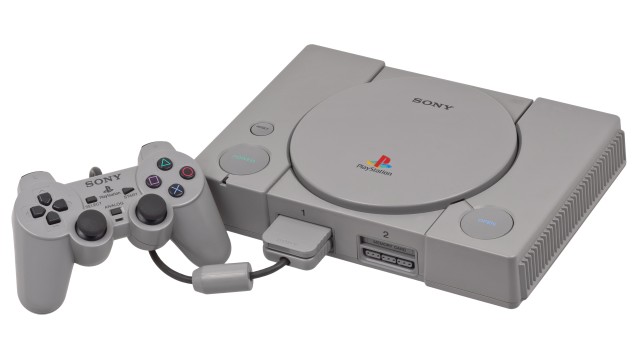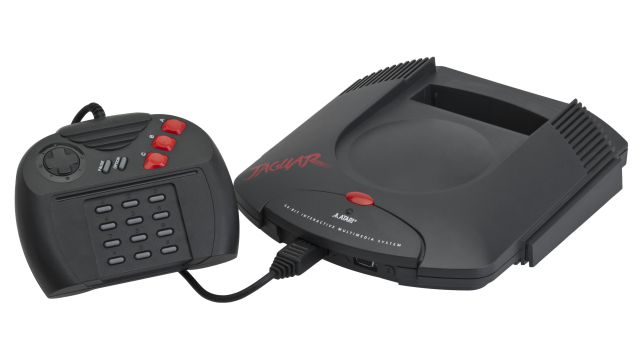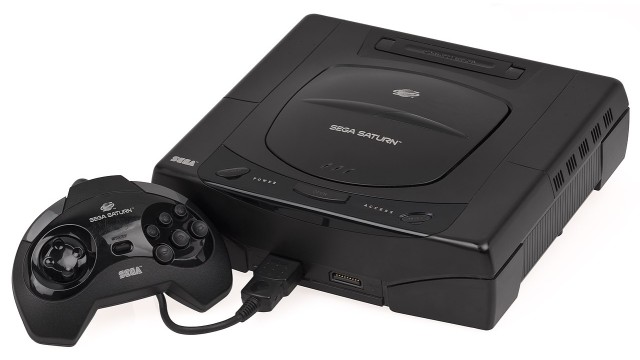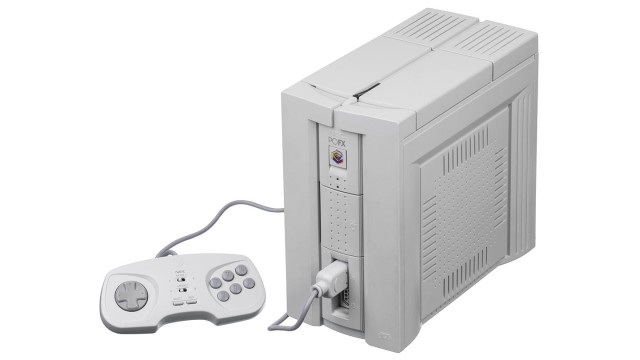
PlayStation
Launches: 1993
Discontinued: 2006
Life span: 13 years
Units sold: 104 250 000
Generation: 5th
Country releases of PlayStation
 Japan: Japan: | 03/Dec/1994 | ||
 USA: USA: | 09/Nov/1995 | ||
 Europe: Europe: | 29/Nov/1995 | ||
 Spain: Spain: | 29/Nov/1995 | 60000 | ₧ |
 PlayStation technical specifications
PlayStation technical specifications
CPU: R3000
Memory: 2 MB
 PlayStation video specifications
PlayStation video specifications
PlayStation graphics capabilities.
Video chip:
Video connection: Composite Video
 PlayStation audio specifications
PlayStation audio specifications
PlayStation sound capabilities.
Audio chip:
Audio mode:
 Controllers of PlayStation
Controllers of PlayStation
 PlayStation games support
PlayStation games support
Support: CD
PlayStation games
Games library:
PlayStation story
The original PlayStation, released by Sony in 1994 in Japan and 1995 in other major markets, represents a transformative moment in the history of video game consoles. Its development, launch, and subsequent market reception illustrate how Sony’s entry into the gaming industry reshaped the competitive landscape and set new standards for gaming hardware.
The development of the PlayStation began in the early 1990s, when Sony, a company primarily known for its electronics and entertainment products, decided to enter the burgeoning video game market. The project was originally conceived through a partnership with Nintendo, intended to create a CD-ROM add-on for the Super Nintendo Entertainment System (SNES). However, due to a series of disputes and changes in direction, the collaboration between Sony and Nintendo fell apart. This split allowed Sony to pursue its own path in the gaming industry, leveraging the work already done to develop a standalone console.
Sony’s development team, led by Ken Kutaragi, who is often referred to as the "Father of PlayStation," recognized the potential of CD-ROM technology to offer larger storage capacities and richer multimedia experiences compared to the cartridge-based systems prevalent at the time. The PlayStation was designed around a MIPS R3000-based processor and included a custom Sony GPU capable of rendering impressive 3D graphics for its time. This hardware setup provided the console with the ability to deliver high-quality graphics and complex gameplay that was a significant leap forward from the 8-bit and 16-bit systems available on the market.
The development process also involved extensive collaboration with game developers to ensure that the PlayStation would have a strong lineup of titles at launch. Sony created an extensive software development kit (SDK) that made it easier for developers to create games for the new platform. The company’s commitment to fostering relationships with third-party developers was crucial in building a diverse and appealing game library, which played a significant role in the console’s success.
The launch of the PlayStation was a carefully orchestrated event that marked Sony’s entry into the competitive video game market. The console was first released in Japan on December 3, 1994.
The initial reception was positive, with the PlayStation quickly gaining traction among gamers due to its innovative features and strong game lineup. Following its Japanese launch, the PlayStation was released in North America on September 9, 1995, and in Europe on September 29, 1995. The timing of the launch was strategic, aiming to capitalize on the growing interest in 3D gaming and multimedia entertainment.
At launch, the PlayStation was accompanied by a variety of games that showcased its capabilities. Titles such as “Ridge Racer” and “Tekken” were instrumental in demonstrating the console’s advanced graphics and gameplay. The inclusion of a CD-ROM drive allowed for larger and more complex games, setting the PlayStation apart from its cartridge-based competitors. Additionally, Sony’s marketing campaign emphasized the console’s multimedia capabilities, which included CD playback and support for interactive gaming experiences.
The market reception of the PlayStation was overwhelmingly positive and marked a significant shift in the video game industry. The console was praised for its superior graphics, innovative gameplay, and extensive game library. The PlayStation’s ability to deliver high-quality 3D graphics and immersive gaming experiences was seen as a major advancement over the existing 16-bit systems. Furthermore, the decision to use CDs instead of cartridges was well-received, as it allowed for larger game sizes and more complex content.
The PlayStation’s success was also bolstered by its strong relationships with third-party developers and publishers, which resulted in a wide variety of games spanning different genres. This diverse game library contributed to the console’s broad appeal and helped to establish Sony as a major player in the gaming industry.
The PlayStation’s ability to attract both established developers and new talent was crucial in creating a rich and varied gaming experience for players.
In addition to its technical achievements and game library, the PlayStation’s marketing strategy played a significant role in its success. Sony’s advertising campaigns effectively communicated the console’s advantages and helped to build a strong brand identity. The PlayStation quickly became associated with cutting-edge technology and high-quality gaming, further solidifying its position in the market.
Despite facing competition from established players like Nintendo and Sega, the PlayStation managed to capture a significant share of the market. Its innovative features, strong game lineup, and effective marketing helped it to stand out in a crowded and competitive field. The console’s success set the stage for Sony’s continued presence in the gaming industry and paved the way for subsequent generations of PlayStation consoles.
The original PlayStation represents a pivotal moment in the history of video game consoles.
Its development marked a shift towards 3D graphics and CD-ROM technology, while its launch and market reception highlighted Sony’s ability to effectively enter and reshape the gaming industry. The PlayStation’s impact on the gaming landscape is reflected in its role in setting new standards for gaming hardware and establishing Sony as a major player in the video game market.
Next Sony console: PlayStation 2



